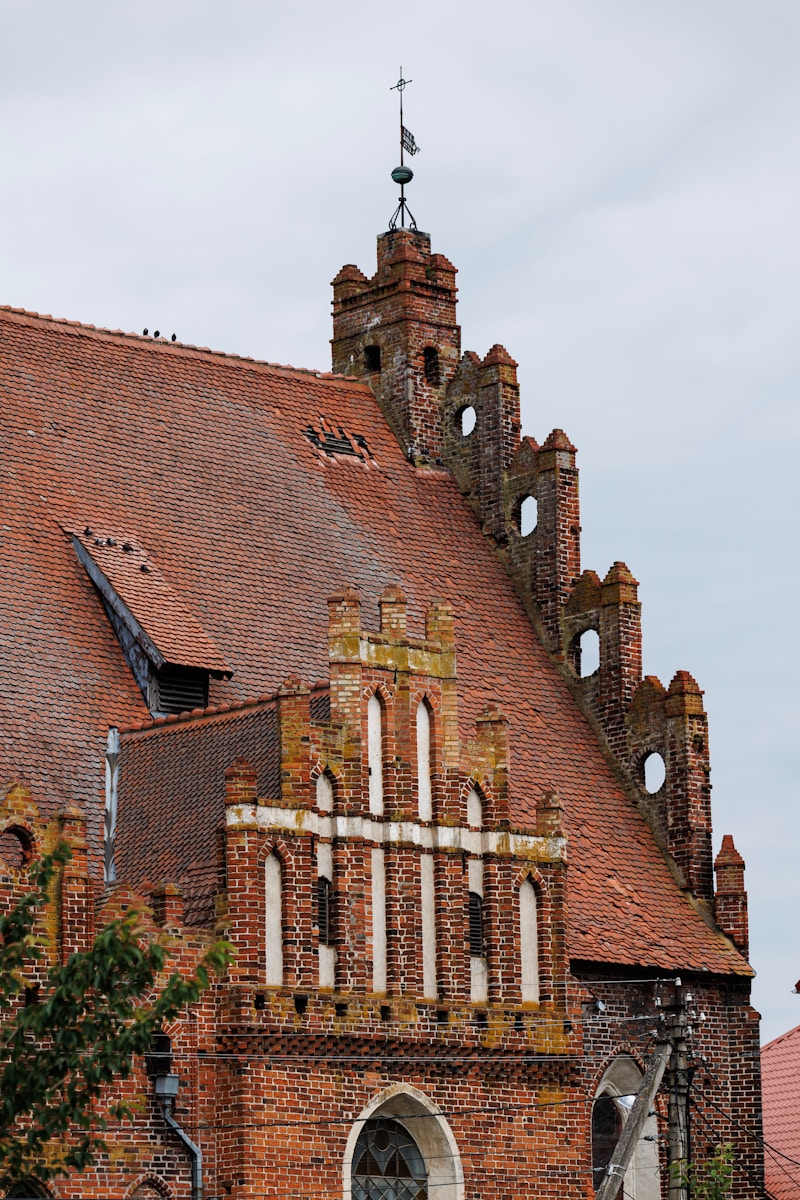There’s this smell in old houses. It’s not bad exactly, but kinda like dust and attic sweat had a child. Folks call it “character.” What they don’t see—or smell, unless something goes horribly sideways—is the aging timber in their roof might be holding onto a secret itch for combustion.
Old wood’s tricky like that. It dries out over decades, stiffens, cracks like your granddad’s knuckles, and turns into something more flammable than it ever was new. Back in the day, nobody thought too much about fireproofing the attic cavity. It was mostly “throw some rafters up there, slap shingles on top, call it a roof.” But here’s the rub—those ancient materials, especially the ones built pre-1978 or so, weren’t exactly… cautious.
And then there’s knob-and-tube wiring – oh, buddy.
Wires That Shoulda Been Fired Years Ago
Alright. You ever seen knob-and-tube wiring? It looks like someone strung spaghetti across the joists and prayed to Thomas Edison. No insulation, no grounding, no business being inside your house in 2025. And yet—yet—it still hums away inside plenty of older rooftops.
That stuff wasn’t designed to last this long. Mice chew it. Insulation falls off like peeling skin. A single spark up there, where nobody looks until it’s smokin’? Recipe for disaster.
“Knob and tube” is a term for a system of wiring used in older homes. It is named for the ceramic knobs that support the wires, and the tubes that protect the wires through the wood framing of the home. Knob-and-tube wiring carries a lower supply of electricity than modern synthetic wiring and does not contain a ground wire (the third prong on electrical outlets). Knob-and-tube wiring may run throughout the home, and is often identifiable by its rubber or asphalt-saturated cotton cloth coating. This system of wiring was phased out in the 1940s after better alternatives came along. Knob-and-tube wiring does not meet modern electrical safety codes, as it was designed to carry a light electrical load and is overloaded easily in a modern home with multiple appliances often running at once.
https://www.mncee.org/dealing-knob-and-tube-wiring
My cousin Ricky—he had this 1920s Craftsman, cute as a button, until one December night when he smelled burning plastic. By the time they found the problem, half his attic looked like a roasted marshmallow. The cause? A cracked ceramic knob shorted out behind some old insulation. Boom. Just like that.
Dust: The Most Boring Kind of Fuel
We don’t talk enough about dust. Real boring stuff, unless you leave it alone for… oh, twenty years. Dust bunnies become dust herds. And in an attic or inside an older roof cavity? They love to party on top of hot recessed lighting fixtures and sagging bathroom fans.
Fire inspectors will tell you: dust and lint—those cozy, fuzzy little nuisances—are combustible. But nobody thinks about them. You clean your dryer lint trap, sure. But the top of that 1974 ventilation duct sitting three inches from a frayed wire? Nah. Not on your radar.
And don’t get me started on insulation. Some of that ancient stuff? It’s like they stuffed the ceiling with flammable mashed potatoes.
Chimneys, Flashings, and Other Near-Misses
Older homes with fireplaces got another gremlin: the flashing. That’s the metal that should be sealing the chimney to the roof. Should be. But with time, metal rusts. Tar dries up. Gaps form.
And when hot embers rise up that flue and catch a breeze? If there’s a nice little gap in the flashing, those embers could hop right over into the attic. You’d never know. Until maybe three hours later when someone down the street says, “Hey, is that smoke?”
Why are they called “dust bunnies”? No one knows for sure, but it might have something to do with the fact that they’re fluffy, quiet and tend to multiply rapidly! Usually hanging out under furniture or other areas that are hard to reach with a vacuum, broom or duster, dust bunnies are balls of dust and other materials that tend to be held together with static electricity. If static charges build up, dust bunnies can become attracted to each other, resulting in large “super” dust bunnies!
https://www.mollymaid.com/practically-spotless/2014/february/dust-bunnies-what-are-they-where-do-they-live-an/
Heard about a fella out near Flagstaff, had a wood stove pipe running through his ceiling. Built back in the 60s. They didn’t put a proper heat shield around the pipe—just ran it right next to a 2×4. House made it 50+ years just fine… until one winter, the roof caught fire while he was asleep.
Survived. But his beard didn’t.
Rodents, Nests, and Stuff You Don’t Wanna Touch
Okay, so here’s a thing: squirrels. And rats. They chew. Everything. Including wires. And if you’ve got an old roof, chances are it’s got more holes than a conspiracy theory.
Rodents love attics. It’s warm. It’s dry. Perfect nesting ground. And they don’t care if their nest is on top of an electrical junction box. Cardboard. Shredded insulation. Bits of plastic. Heck, one guy in Baltimore found a bird’s nest made entirely of stolen LED Christmas light wires. That’s festive and flammable.
Why do rodents love our homes and, in particular, our attics? The answers aren’t all that different from the reasons why we love our homes, mainly safety and comfort. Attics are warm, and they have plenty of space in which to roam around. There is lots of material they can use to build nests, and humans or any other intruders rarely visit attics. Mice and rats in the Vancouver, Washington and Portland, Oregon area couldn’t find a much more comfortable place to settle in.
https://newleafpestcontrol.com/blog/rodents-love-attics/
The Myth of “It’s Been Fine for Years”
People’ll say, “This house is solid—it’s been standin’ since 1953!” Sure. But so has your Aunt Dorothy, and she ain’t sprinting stairs anymore. Age don’t mean strength. Sometimes it just means you haven’t looked close enough.
Just because a roof hasn’t caught fire yet don’t mean it ain’t trying to. There’s this dangerous confidence that settles in with time. A shrug. “If something was gonna happen, it’d have happened already.” And that, friend, is how houses burn down on Christmas Eve.
Modern Fixes That Clash With Old Bones
You know what else causes problems? When folks try to upgrade only parts of an old system. Like, someone installs new recessed lighting… but forgets the attic wiring’s still vintage. Or they throw solar panels on top, drill right through the deck, and accidentally pierce something they shouldn’t.
Suddenly, you’ve got moisture creeping in. Wet wood near exposed wires. And next July, when things get crispy up there? Bad news.
Insurance Will Say “Nope”
Here’s a fun fact: lots of insurance companies don’t cover fires caused by outdated electrical systems if they warned you already. So that old breaker box from the 70s? The one nobody’s opened since the Bee Gees were charting? If that thing trips and torches your roof, you might be footing the bill alone.
A guy I knew—Tim?—he tried to file a claim after a fire started in his attic. Insurance adjuster found out he’d been told two years earlier that his wiring was “obsolete and hazardous.” Claim denied.
Tim now lives in a trailer while his roofless bungalow sits, burned out like a sad jack-o’-lantern.
So, Uh, What Now?
Well, don’t panic. But also, don’t not panic? Point is, if you live under a roof older than your cousin’s vinyl record collection, it’s probably time to get someone up there. Not just to check for leaks. Not just to peek at the shingles. But to sniff around for fire hazards. Wires. Rodent debris. Dust piles. Missing flashing. Ancient insulation. Mystery stains.
No one ever thinks the fire will start up there. But it’s warm. It’s dry. It’s full of forgotten things. That’s fire’s favorite recipe.
One Last Odd Thought
Every time I walk past an old Victorian or 50s rancher with Christmas lights still up in July, I wonder if someone’s attic is just quietly smoldering. Not bursting. Not obvious. Just a slow, cranky heat building up from a nest of chewed wires behind a cracked joist.
And then I keep walking. But maybe you shouldn’t. Maybe you should call someone. Just to look. Before the attic decides it’s time to light up the sky.





